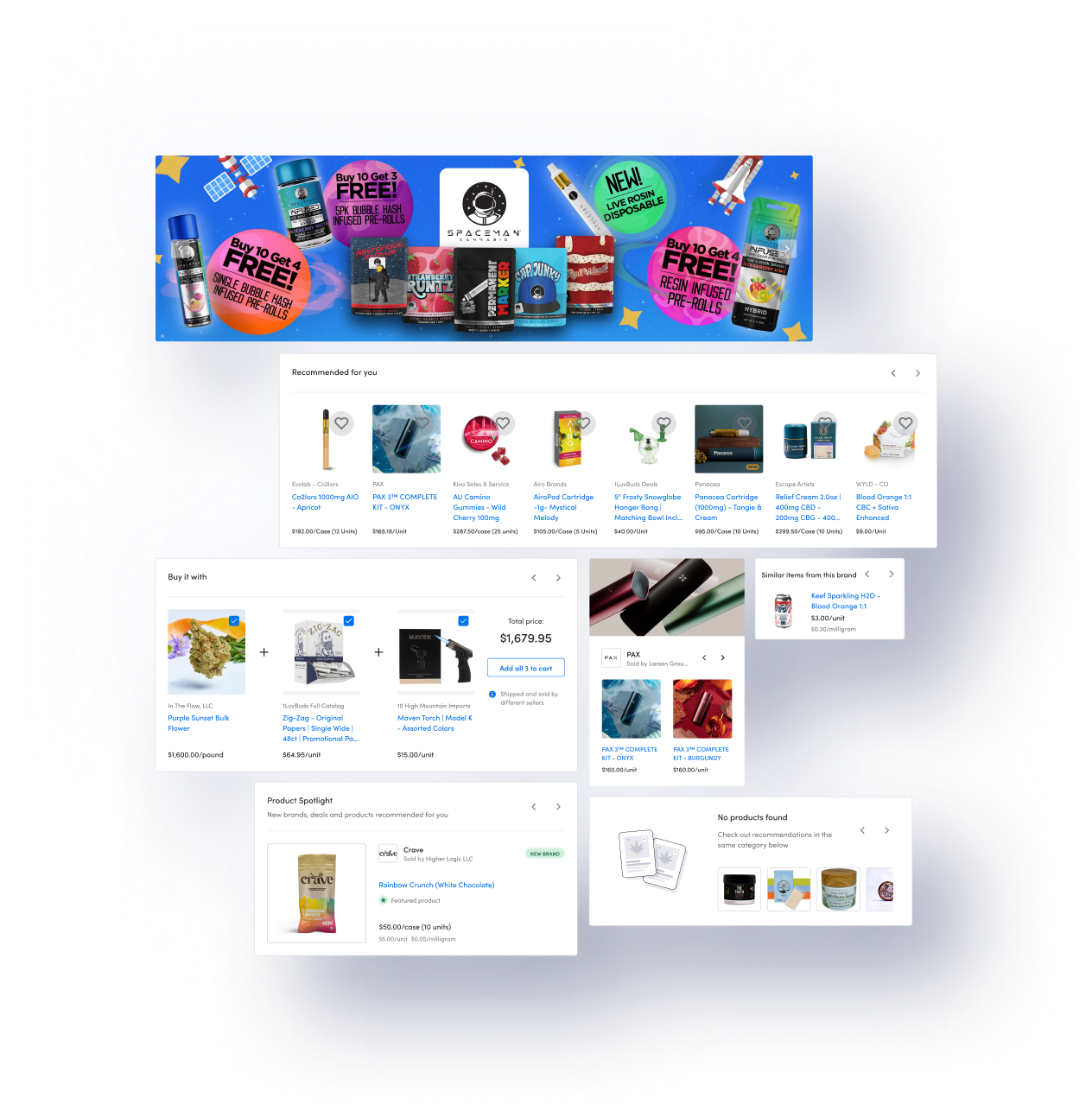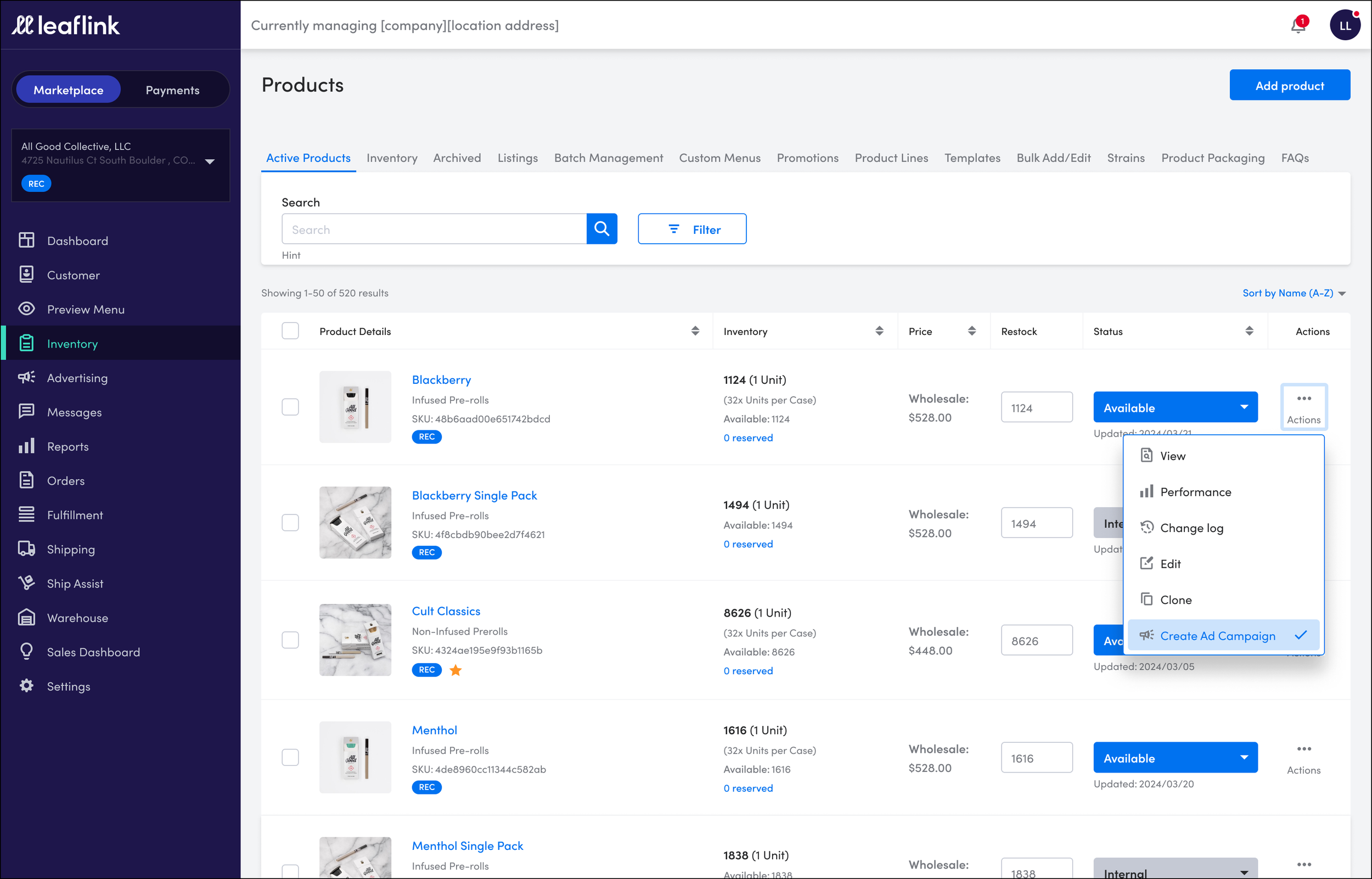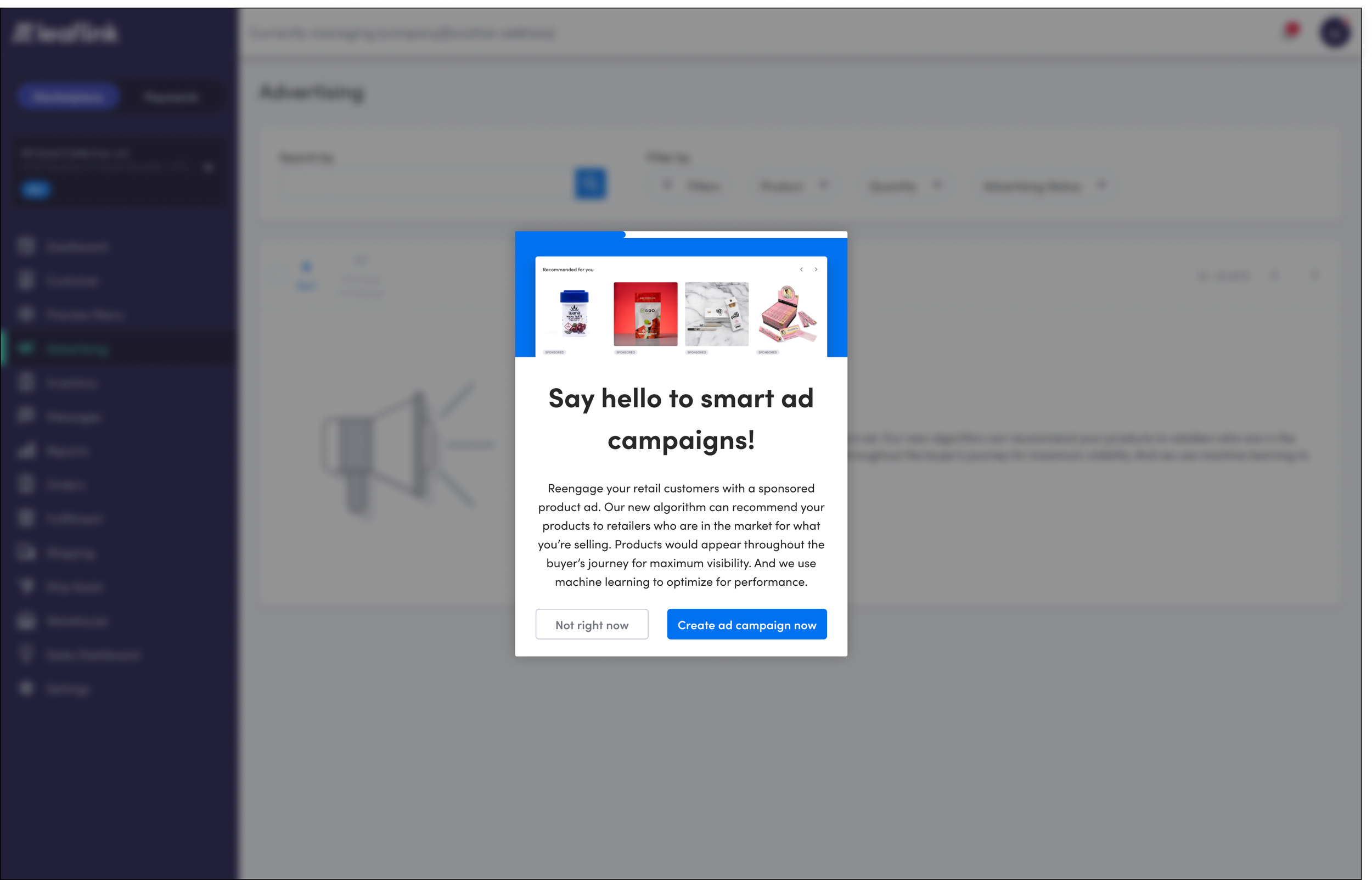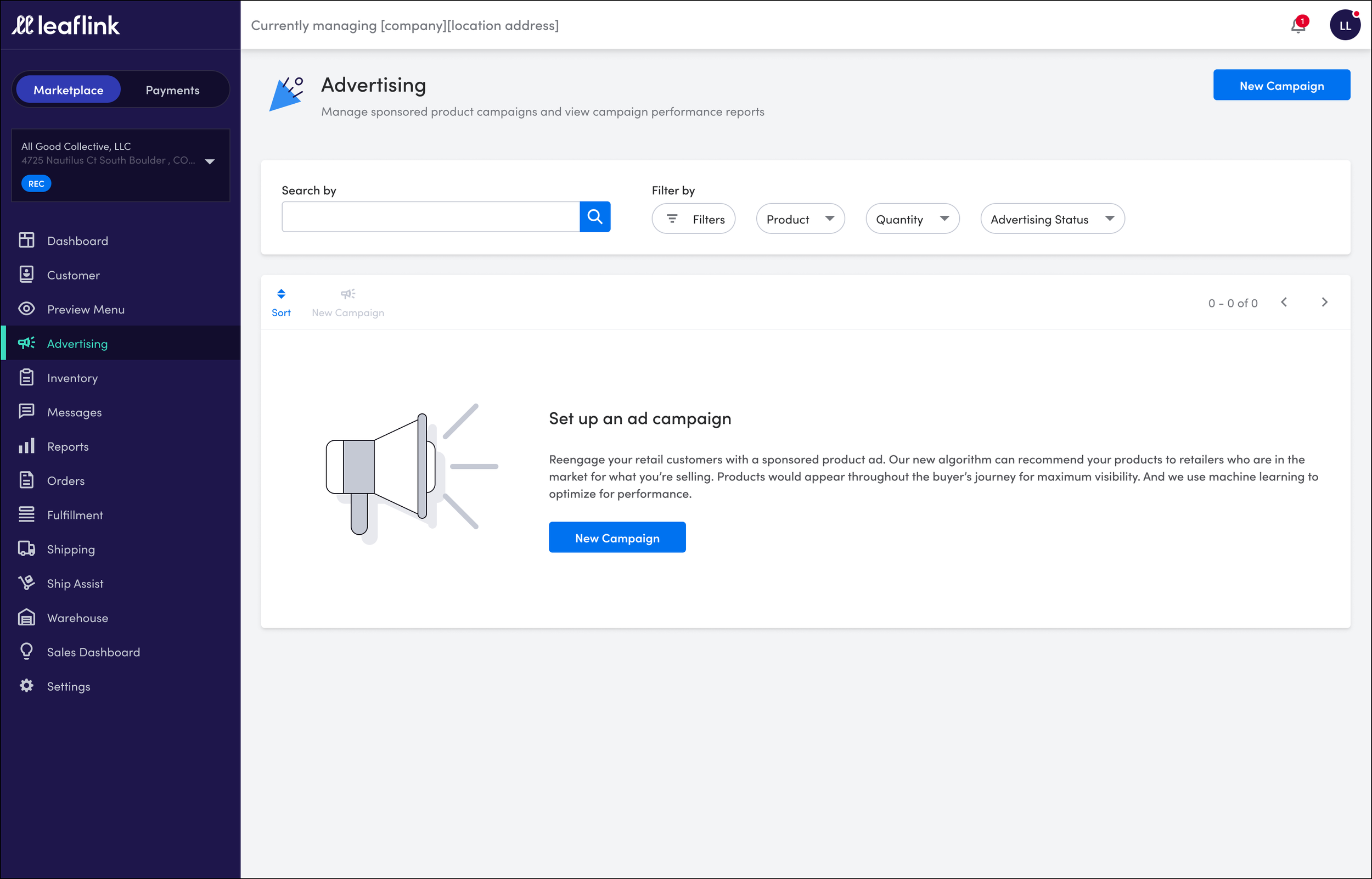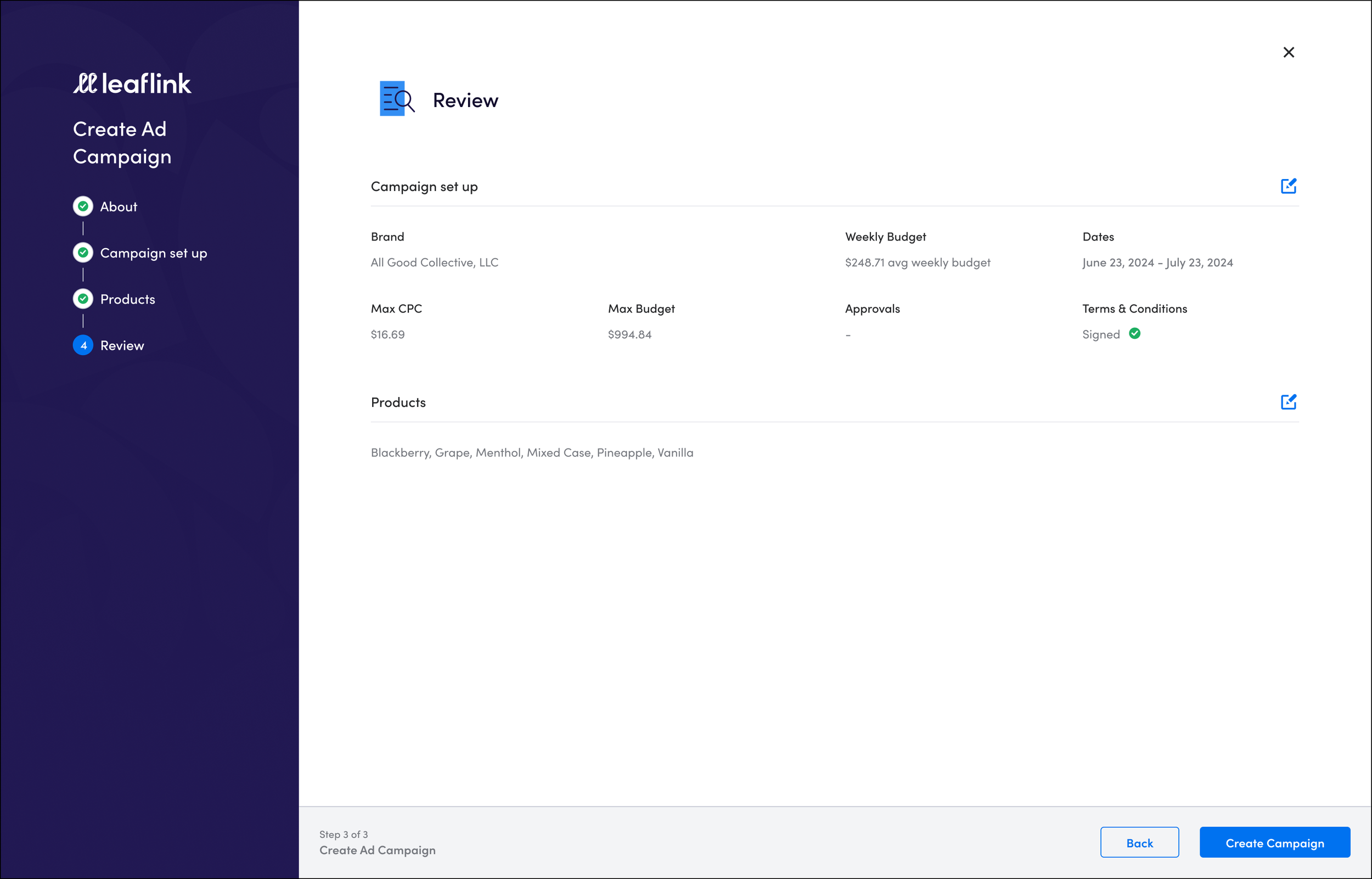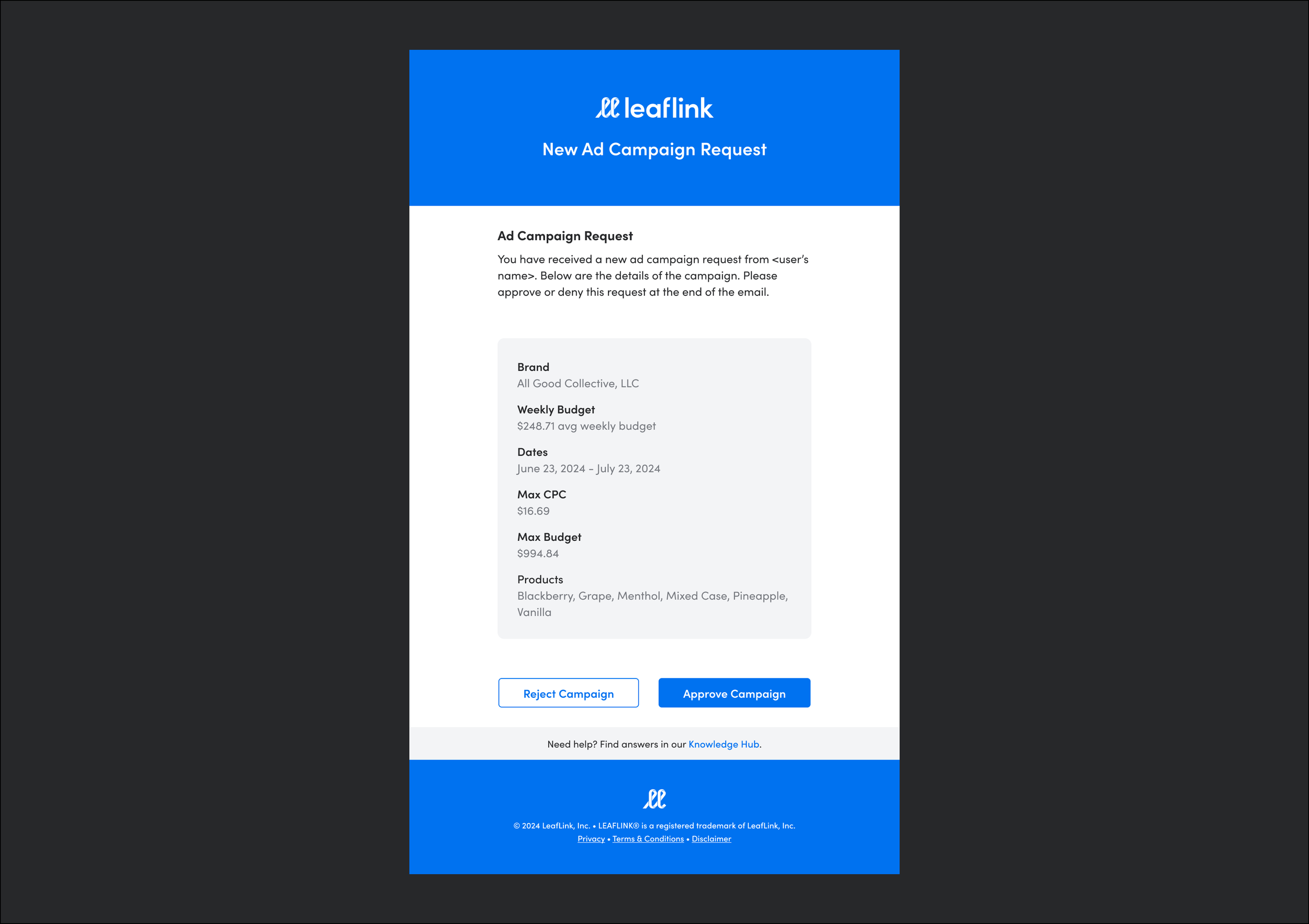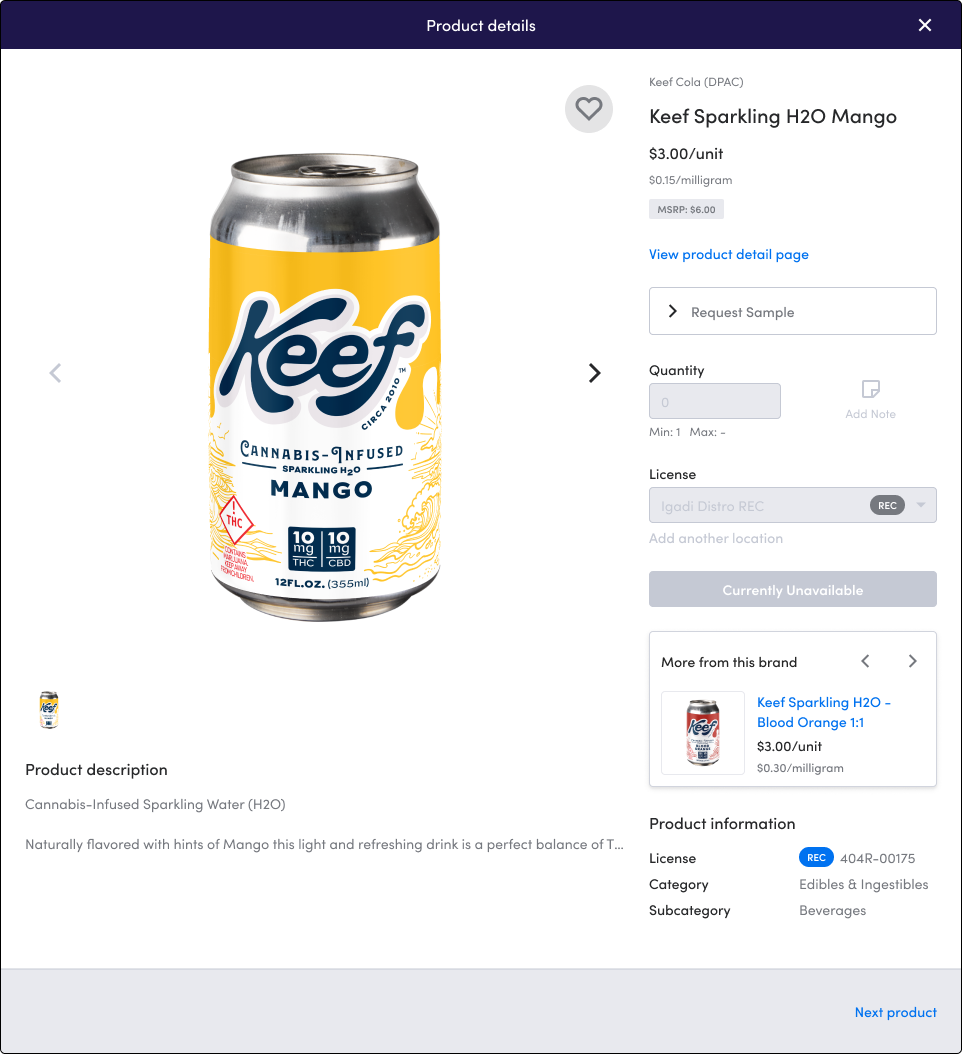Q3 2023 - Q4 2024Advertising
Developing targeted advertising solutions, empowering brands with self-service tools and enhancing retailer’s product discovery to drive engagement and revenue.
THE PROJECTIntroduction
From Q3 2023 - Q4 2024 , we aimed to enhance both new and existing advertising placements on the LeafLink platform, focusing on increasing brand visibility while ensuring these placements provide value to retailers and avoid being perceived as intrusive. This effort was designed to empower brands with tools for better engagement and drive higher ad revenue for LeafLink.
-
LeafLink is a digital platform designed to streamline wholesale cannabis commerce. It connects licensed cannabis brands (sellers) and retailers (buyers) to facilitate order management, payments, logistics, and brand exposure in the cannabis industry.
-
Cannabis retailers, aka dispensaries, purchase cannabis products to sell to consumers. LeafLink supports them by providing a centralized platform to discover new brands, place orders, track deliveries, and manage payments, simplifying the purchasing process and improving operational efficiency.
-
Cannabis brands focus on making a variety of cannabis products, including flower, vapes, edibles, and accessories. LeafLink helps these brands by offering a marketplace for wholesale sales. This increases their visibility and helps them manage orders, track payments, and gather important insights.
Problem Statement
Cannabis brands faced challenges in gaining visibility in the marketplace due to a lack of control over their advertising campaigns. Many brands, especially those with limited resources, were unable to compete with larger brands for prominent placements.
On the retailer side, retailers struggled with discovering relevant products among an overwhelming number of SKUs. This created a need for more targeted, personalized advertising solutions that would not overwhelm users while increasing engagement and conversions.
My Role & Partnership
As the only product designer on this project, I led the entire design process for multiple ad solutions within the marketplace. I partnered closely with my pod’s product manager, engineering manager, engineers, and data analysts to define and implement advertising solutions that would benefit both brands and retailers.
I was responsible for designing the Self-Service Product Promotion Tool for brands, as well as various ad placements, such as Leaderboard Ads, Product Spotlights, Category-Based Carousels, and Shoppable Skyscrapers for retailers.
RESEARCHSurveys & User Interviews
We conducted surveys and interviews with both brands and retailers to gather insights into their challenges with the current advertising system:
Brands expressed frustration over the lack of control in managing their ads and the difficulty of competing with larger brands for premium placements.
Retailers reported feeling overwhelmed by the large number of products available, often making it difficult to discover relevant items for their stores.
Summary
From the user interviews and surveys, we identified key pain points:
Brands needed a self-service tool to manage their ads without relying on manual processes.
Retailers needed a more personalized shopping experience, with better product categorization and targeted recommendations. also a balance of paid and organic content in ads to ensure relevance without feeling overwhelmed by promotional material.
User Stories
As a retailer, I want…
To see product recommendations based on my preferences and purchase history so that I can discover relevant products more easily.
As a brand, I want…
To create and manage my own ads so I can promote my products efficiently.
My ads to appear in categories relevant to my products, so retailers can find them when they are browsing similar items.
DESIGN PROCESSPart 1: Empowering Brands with Self-Service Ads
Current State and Gaps
At the time, LeafLink had some basic advertising functionality, but it was not well-organized, and brands lacked tools to manage their campaigns autonomously.
Competitive Analysis of Popular Self-service Advertising Tools
Collaboration with Moloco
We partnered with Moloco, our ad server, to determine the best way to build out a self-service tool for brands. We worked closely with our Moloco rep to explore two potential approaches: either using Moloco’s embedded system or designing a solution that would feel native to LeafLink. This required balancing the ease of integration with the desire to maintain a consistent Leaflink user experience. After extensive discussions, we chose to integrate the self-service tool in a way that kept the UI consistent with LeafLink’s design language, while still leveraging Moloco’s capabilities for campaign management, targeting, and reporting.
New Brand User Flow
The onboarding process is now smooth and tailored to fit their needs. When users log into their account, they land on their Dashboard, or they can access it directly through a CTA in a marketing email. Inside LeafLink, they can navigate to the Inventory or Reports pages, both of which have a direct link to the new Advertising page. This new Advertising page empowers brands to create and manage their advertising campaigns independently, removing the need to consult with a LeafLink Ad Ops representative. Users can follow a simple set of steps to enter all the necessary campaign details, select the products they want to include, and complete their campaign setup. After launching, they’ll have the flexibility to edit or cancel their campaign, initiate new ones, and view analytics to fine-tune their strategy as needed.
Final Self-Service Ad Creation Designs
Part 2: Enhancing the Retailer Experience with Personalized Ads
Leveraging Algolia’s AI Recommendation Tool
I also worked closely with one of our top backend engineers, who was responsible for building out our recommendation engine using Algolia. Through collaboration, we discovered that we could leverage Algolia’s AI-powered recommendation engine to provide several types of product suggestions, including:
Frequently Bought Together items
Related Products
Trending Products
Top Products
General product recommendations based on a retailer’s browsing history and preferences.
This discovery opened up new opportunities to create personalized shopping experiences for retailers while also increasing product visibility for brands. By presenting relevant, high-value items in a way that didn’t overwhelm the user, we could drive more meaningful interactions and, ultimately, higher sales.
Testing Strategies for Ad Placements
With these new insights, I laid out several test strategies to determine which types of recommendations and ad formats would perform the best. These included testing different combinations of product types, such as Trending Products vs. Frequently Bought Together, and variations of related product carousels. Additionally, we worked with the data team to track user interactions with these different ad placements and understand how they impacted retailer engagement and sales.
The data team provided valuable insights from early monitoring, including:
PDP modal with a “More from this brand” carousel had a higher conversion rate of 12.81% with a CTR of 0.04%.
Recommendations like Product Spotlight and PDP modal carousels showed the most promise in driving conversions.
Early data also revealed that AI-generated product recommendations led to increased engagement with a positive trend in average daily conversion rates, especially when it’s showing products from the same brand or brands they know of or purchase from.
Early Data
Based on the early data, the data team recommended continuing to test and refine the Product Spotlight and Product Recommendations placements, especially those utilizing brand filters. Their analysis suggested that refining these placements would likely improve both CTR and conversion rates, helping us identify the most effective way to personalize ad experiences while optimizing for ad revenue. The data team also advised monitoring the Average Order Value (AOV) and Cart Size to ensure that these placements were positively influencing not just engagement but also overall sales.
User Testing
During the User Testing phase, we A/B tested layouts, algorithms, and strategies in a few select markets. I also conducted several rounds of interviews with the participating retailers, gathering feedback on usability, ease of use, and ad effectiveness. We specifically tested the new Sponsored/Organic Carousels, Skyscrapers, and Product Spotlights to see how well they helped retailers find relevant products without being overwhelming. We measured how quickly retailers could find and engage with the ads, how the mix of paid and organic content affected their shopping experience, and if the AI-generated product recommendations were appealing.
Current State and Gaps
Retailers had difficulty navigating the growing number of products on the platform, which hindered product discovery. The existing system did not offer sufficient personalization or a balance of paid and organic ads, resulting in a less-than-optimal user experience.
Retailer Current Flow
Retailer’s New Flow
Retailers can now engage with ads through various entry points, such as the Dashboard, Shop Products, Shop Brands, or Discover Products. During our testing, we tried several formats and ultimately decided to remove the less effective touch points marked in red. The most successful options we identified included Sponsored/Organic Carousels, which appear on all shop pages, the cart, and during checkout. Additionally, Skyscrapers on the Shop Brands page, as well as the Product Spotlight and Leaderboard on the dashboard, have proven to be effective.
At both the Cart and Order Confirmation stages, retailers receive personalized and targeted ad recommendations. This new process aims to create a more individualized shopping experience by displaying ads in a balanced manner—merging paid and organic content to enhance engagement without overwhelming users. Compared to the previous flow, this updated version significantly boosts product discovery by offering more dynamic and relevant ad placements tailored to the retailer's browsing habits.
Final Retailer Ad Placement Designs
User feedback was essential. Retailers reacted well to the suggestions in the Product Detail Modal, but they stressed that striking a balance between paid and organic ads was important—too many sponsored posts could hurt the experience. We adjusted the ratios to ensure a good mix of both in all carousels and ads.
After the first user tests, I improved the design to fix issues raised by retailers. A major change was making AI recommendations clearer so retailers understood why certain products were suggested based on past interactions. We also repositioned our carousels to avoid blocking important content on the Shop Products page.
The end product offered a more intuitive and personalized shopping experience for retailers while giving brands the visibility they needed. The balance of paid and organic content kept retailers from feeling overloaded with ads, and the AI recommendations enhanced product discovery.
RESULTSEngagement, Click-through Rates, and Ad Revenue
The new advertising placements led to a significant increase in engagement and revenue:
For brands, the Self-Service Product Promotion Tool resulted in a 25% increase in ad engagement from smaller brands.
Retailers saw an increase in CTR (click-through rate) by 18% for Category Carousels, as the balance between paid and organic ads improved product discovery.
Overall ad revenue grew by 30% due to the introduction of targeted, personalized ad placements and the Self-Service Tool that empowered brands to actively manage their campaigns.
What I Learned
This project reinforced the importance of user autonomy and personalization in advertising. Giving brands control over their campaigns led to higher engagement, and improving retailers' ability to discover relevant products through a balanced mix of paid and organic placements significantly enhanced the user experience. It was also crucial to ensure that the ads were seamlessly integrated into the platform to avoid overwhelming users. Moving forward, the feedback from this project will help guide future iterations to refine ad targeting and further enhance the product discovery process.



